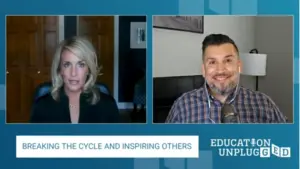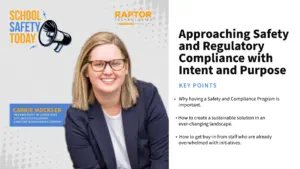National Study Shows Online Literacy Engagement Minimizes COVID Slide
A real-time national education study of more than one million students by two leading not-for-profit education groups has found that continued engagement with technology-enabled instruction during COVID-19 school closures has significantly reduced students’ loss of potential reading growth. The Successful Practices Network (SPN) and the Center for College and Career Readiness (CCCR) released these findings today, which are some of the very first published results using current data of students’ learning from Fall 2020. Recommendations to help educators accelerate learning are also included in the new study.
This unique analysis draws its finding from actual usage and performance data for students using Achieve3000 Literacy™ before and after schools closed on March 11 through September 30, 2020. Data for more than 1 million students using Achieve3000 Literacy, an online solution for differentiated and personalized literacy instruction in Grades 2-12, during the 2019 and 2020 school years, demonstrates:
Students Lost Only 12% of Potential Learning Gains. Overall and on average, students only experienced a 12% loss to their potential learning gains. It is worth noting that the study previously published by SPN and CCCR in May 2020 projected the loss of potential learning gains to be 28% by June 1, 2020.
Achievement Gap Widened by 3%–Much Less Than Expected. The new analysis showed that the achievement gap widened by just 3%. The previous analysis conducted by SPN and CCR showed the achievement gap between students from low- and high-income schools could increase by as much as 18% during school closures.
Students Not Engaged with Remote Instruction Lost 20%, or 73 Days, of Their Potential Gains. Students who did not engage in reading practice after school closures last spring started this school year behind where they would have been during a normal school year. These students’ reading assessments demonstrate a 20% loss in potential growth whereas even students who remained engaged after school closures experienced an 8% loss.
Achieve3000 Chief Academic Officer Kevin Baird explains, “Although the actual growth since school closures falls below the potential growth mark for active users, the blue-dotted line, it is still far above the trajectory for non-active students, represented by the yellow-dotted line. Many students could have lost up to 28% of their potential reading gains by the end of last school year. In comparison, students engaged with Achieve3000 Literacy through the end of last school year experienced only a 12% loss of their potential gains.”
Based on the conclusions of this study, we can offer a number of initial recommendations for how schools and districts can promote learning during periods of remote and hybrid instruction:
Catch-up for Losses in Potential Learning
The COVID slide is evident, especially for students who became inactive during school closures. Identifying learning gaps and providing resources to close the gaps is critical to make sure the majority of students make up for lost ground. Using a Universal Screener, such as LevelSet—a universal screener that many schools allow students to take from home—can quickly identify students in need of additional support.
Encourage Student Participation
It can be easy for students to become disengaged through all the online learning options that their schools have implemented. Frequent contact by teachers through video conference, both in groups and one-on-one, can help ensure that students stay connected and engaged in learning. In addition, using ed -tech tools that incorporate teacher-led instruction can relieve some of the burden on teachers while providing students with additional opportunities to receive guided instruction.
Provide Professional Development
Teachers must be provided with opportunities to learn best practices that will ensure instructional continuity for their students regardless of their learning environments. Important instructional strategies for schools and districts to focus on include:
- How to facilitate lessons that promote clarity and engagement,
- Utilization of educational technology solutions to their full potential,
- Differentiating instruction to meet the needs of all students,
- Empowering students’ self-efficacy via goal-setting, peer-to-peer interaction, and real-time teacher feedback.
This study is the second in a series. The results and additional insights will be shared by the researchers with district leaders via upcoming webinars. More information to come at http://www.achieve3000.com.








